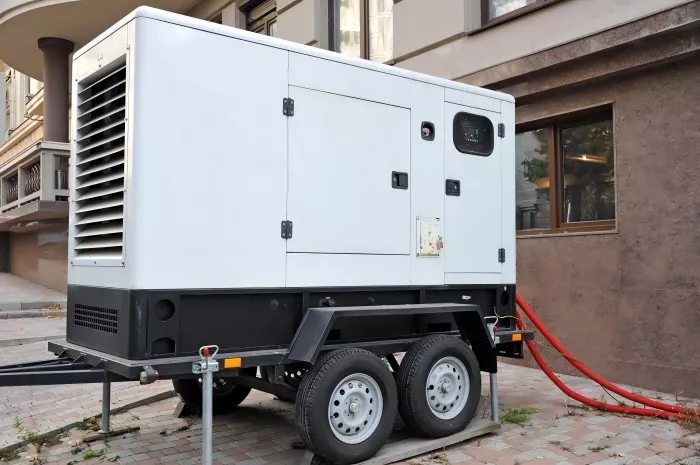Synchronizing diesel generators is crucial for ensuring a stable and continuous power supply, particularly in applications where reliability and consistency are paramount. Proper synchronization allows multiple generators to work together seamlessly, sharing the load and providing backup power when needed. This guide outlines the steps and considerations involved in synchronizing diesel generators, offering practical advice to achieve effective and safe synchronization.
1. Understanding Generator Synchronization
1.1 What is Generator Synchronization?
Generator synchronization refers to the process of matching the output characteristics of multiple generators to operate in parallel. This includes aligning the voltage, frequency, and phase angle of each generator to ensure they work together harmoniously without causing disturbances or damage.
1.2 Importance of Synchronization
Load Sharing: Proper synchronization enables multiple generators to share the electrical load, improving efficiency and extending the lifespan of each unit.
Redundancy: Synchronizing generators provides backup power in case one unit fails, enhancing system reliability and reducing downtime.
Operational Efficiency: Well-synchronized generators operate more efficiently, optimizing fuel consumption and minimizing operational costs.
2. Preparation for Synchronization
2.1 Check Generator Specifications
Generator Ratings: Ensure that all generators have compatible ratings, including voltage, frequency, and power output. Mismatched ratings can lead to synchronization issues and equipment damage.
Synchronization Equipment: Verify that the necessary synchronization equipment, such as synchronization panels or controllers, is available and properly calibrated.
2.2 System Configuration
Power Distribution System: Assess the power distribution system to ensure it can handle the combined output of the synchronized generators. Check wiring, circuit breakers, and other components for compatibility.
Load Requirements: Determine the total load requirements to ensure that the synchronized generators can meet the demand without overloading.
3. Synchronization Process
3.1 Initial Setup
Idle Operation: Start all generators and allow them to run at idle speeds. This step ensures that each unit reaches its operating temperature and stabilizes before synchronization.
Voltage Adjustment: Adjust the voltage settings on each generator to match the system voltage. Use a voltmeter to verify that the voltage levels are consistent across all generators.
3.2 Frequency Matching
Frequency Measurement: Use a frequency meter to measure the frequency of each generator. Ensure that the frequency is consistent with the system frequency, typically 50 Hz or 60 Hz, depending on the region.
Frequency Adjustment: Adjust the governor settings on each generator to match the system frequency. This step ensures that the generators operate at the same speed and maintain synchronization.
3.3 Phase Alignment
Phase Sequence: Check the phase sequence of each generator using a phase sequence indicator. Ensure that the phase sequence is consistent across all units to avoid phase reversal issues.
Phase Angle Matching: Use a synchroscope to align the phase angles of the generators. The synchroscope helps in visualizing the phase difference and assists in achieving proper alignment.
3.4 Synchronization and Load Sharing
Synchronization Panel: Engage the synchronization panel or controller to connect the generators to the power grid. The panel automatically adjusts voltage, frequency, and phase angle to synchronize the generators.
Load Transfer: Gradually transfer the load to the synchronized generators. Monitor the load distribution to ensure that it is shared evenly among the generators.
Monitoring: Continuously monitor the performance of the synchronized generators, including voltage, frequency, and load sharing. Use instruments such as ammeters and voltmeters to track these parameters.
4. Troubleshooting Synchronization Issues
4.1 Common Problems
Voltage Differences: Mismatched voltage levels can cause synchronization problems. Verify and adjust the voltage settings to ensure compatibility.
Frequency Variations: Variations in frequency can lead to unstable operation. Check and adjust the governor settings to maintain a consistent frequency.
Phase Discrepancies: Incorrect phase alignment can cause interference and damage. Use a synchroscope to ensure accurate phase matching.
4.2 Diagnostic Tools
Synchronization Panels: Modern synchronization panels often have built-in diagnostic tools to identify and troubleshoot issues. Utilize these tools to diagnose and resolve synchronization problems.
Professional Assistance: If synchronization issues persist, seek assistance from qualified technicians or service providers with expertise in generator synchronization.
see also: How Efficient Are Diesel Generators?
5. Safety Considerations
5.1 Safety Protocols
Personal Protective Equipment: Wear appropriate personal protective equipment (PPE) when working with generators. This includes gloves, safety glasses, and hearing protection.
System Isolation: Ensure that the power system is properly isolated before performing any maintenance or adjustments. Follow lockout/tagout procedures to prevent accidental energization.
Training and Expertise: Only trained personnel should perform synchronization procedures. Adequate training and knowledge are essential for safe and effective synchronization.
5.2 Emergency Procedures
Emergency Shutdown: Know the emergency shutdown procedures for the generators in case of synchronization failure or other issues. Ensure that emergency stop buttons and controls are accessible and functional.
Incident Response: Have a plan in place for responding to incidents or emergencies during synchronization. This includes notifying emergency services and implementing corrective actions.
6. Maintenance and Best Practices
6.1 Regular Maintenance
Scheduled Maintenance: Perform regular maintenance on the generators and synchronization equipment to ensure optimal performance. This includes checking fuel levels, oil changes, and inspecting electrical connections.
Calibration: Regularly calibrate synchronization panels and controllers to maintain accurate measurements and settings.
6.2 Best Practices
Documentation: Keep detailed records of synchronization procedures, settings, and performance. Documentation helps in troubleshooting and maintaining consistency.
Training: Provide ongoing training for personnel involved in generator operation and synchronization. Staying updated with the latest practices and technologies enhances safety and efficiency.
Conclusion
Synchronizing diesel generators is a critical process for ensuring reliable and efficient power supply. By following the outlined steps and considering the associated factors, operators can achieve successful synchronization and maintain optimal performance. Proper preparation, careful execution, and ongoing maintenance are key to effective generator synchronization, contributing to a stable and reliable power system.
Related topics:
- Top 4 Quietest Diesel Generator
- What Is the Smallest Diesel Generator?
- How Efficient Are Diesel Generators?

